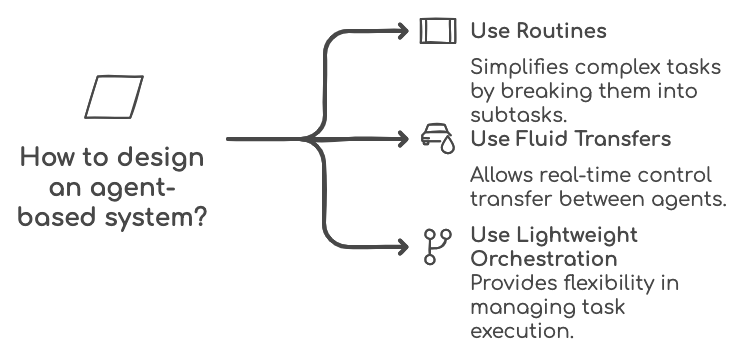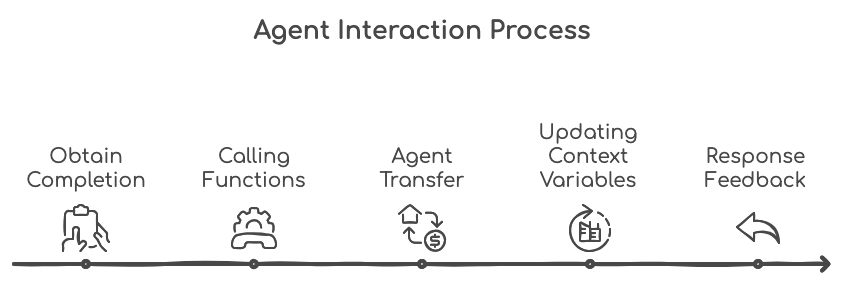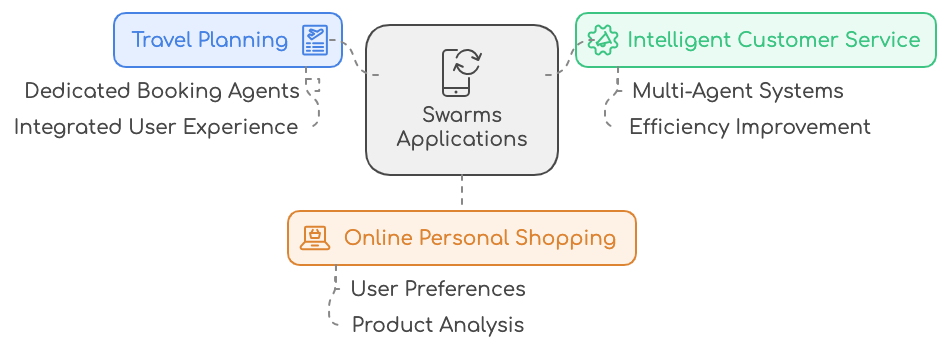The vision of artificial intelligence collaborating fluidly within complex systems is becoming a reality. Swarm, the latest from OpenAI, is an open-source framework that catalyzes this innovation. Designed to orchestrate AI agents in a dynamic environment.
Listen to the AI podcast
Swarm is set to revolutionize the way complex tasks are managed, while offering flexibility and control.
But what are the specific features that make Swarm a must-have tool for AI developers?
What is Swarm?
Swarm is an open-source tool developed by OpenAI that enables the creation of artificial intelligence (AI) systems where multiple AI “agents” work together to accomplish complex tasks. Each agent can execute specific instructions, use tools and communicate with each other to solve problems collaboratively
Swarm is more than just a tool; it’s a platform designed to coordinate and execute AI agents in an optimized way.

Based on two fundamental concepts agents and transfers, Swarm offers an architecture that facilitates collaboration between different intelligent entities.
Each agent is able to encapsulate instructions and tools, while also having the ability to transfer a task or conversation to another agent as needed.
Imagine a network of experts, where each agent is in charge of a specific task, collaborating to achieve a collective goal. This is the essence of Swarm.
Basic concepts: Agents and transfers
The agents in Swarm are modular entities responsible for executing specific tasks. Their flexibility enables them to adapt to a variety of situations.
At the same time, the transfer mechanism ensures that control of a task can easily be passed from one agent to another, enabling smooth workflow management.
This system makes particular sense in typical work scenarios, such as customer service, where different skills are required at each stage of the process.
Swarm features

- Routines: These are used to structure complex tasks into simpler subtasks, allowing agents to follow precise instructions.
- Fluid transfers: agents can pass control to other agents according to needs exchanged in real time.
- Lightweight orchestration: Swarm offers developers great flexibility to manage task execution with ease.
Why is Swarm interesting?
Swarm represents a significant advance because it offers a scalable and customizable approach compared to traditional multi-agent AI systems.
Swarm stands out for its simplicity and ease of integration. These features not only enable better workflow management, but also the ability to adapt quickly to changing market requirements.
In its early days, the platform won over the developer community, registering nearly 13,000 stars on GitHub.
An open-source template
As an open-source framework,Swarm gives developers the freedom to access, modify and experiment with the source code.
OpenAI thus encourages innovation through collaboration and knowledge sharing.
This open nature brings incredible transparency while eliminating barriers to entry for new users.
Swarm architecture
Swarm’s architecture is based on an iterative cycle of operation, ensuring that agents perform their tasks consistently and efficiently:

- Obtain completion from current agent: Each agent receives instructions and generates responses based on language models.
- Calling functions: Agents can interact with various functions to accomplish their tasks, such as data processing.
- Agent transfer: Based on the results, control can be transferred to other agents according to their specialty.
- Updating context variables: Shared variables ensure conversation continuity.
- Response feedback: Finally, the response is communicated to the user.
Limitations and considerations
However, despite its impressive functionality, Swarm has certain limitations.
For example, it doesn’t natively manage state or memory between interactions, requiring developers to create their own solutions for these aspects.
In addition, the ethical implications of automation must be taken into account, including risks of bias and security of use.
Swarm use case
Swarm’s application potential is vast, spanning several sectors, including:

- Travel planning: Swarm can orchestrate dedicated booking agents across different domains, providing an integrated user experience.
- Intelligent customer service: By integrating multi-agent systems, companies can improve the efficiency of their customer services by deploying dedicated agents at every stage of the process.
- Online personal shopping: A shopping agent could consider user preferences, analyze available products, and recommend the best options.
Comparison with other multi-agent AI solutions
Swarm differs from OpenA’s Assistants APII, which also offers a solution dedicated to multi-agent AI, but with integrated memory management.
Swarm manages to pull its weight with a less cumbersome and more modular approach, suited to workflows requiring a variety of capabilities.
This flexibility enables developers to design more customized multi-agent AI systems.
Read our article about AutoGen : Microsoft AutoGen : Multi-Agent AI explained
Integration and extensibility
Swarm works seamlessly with many other tools and frameworks in the tech ecosystem, including:
- LangChain: This integration offers natural language interactions, facilitating the processing of complex queries.
- Anthropic: By enabling interoperability between systems, developments can extend to new dimensions.
The ability to integrate various external APIs also opens doors to robust developments in complex multi-agent systems, making Swarm an ideal candidate for innovation.
The (near) future of multi-agent AI
As Swarm continues to develop, the future of multi-agent AI looks bright.
As Swarm’s capabilities grow stronger, its widespread adoption across diverse sectors could transform not just businesses, but our everyday lives.
What do you think about the implications of multi-agent AI for the future? Share your thoughts in the comments!
AI NEWSLETTER
Stay on top of AI with our Newsletter
Every month, AI news and our latest articles, delivered straight to your inbox.

CHATGPT prompt guide (EDITION 2024)
Download our free PDF guide to crafting effective prompts with ChatGPT.
Designed for beginners, it provides you with the knowledge needed to structure your prompts and boost your productivity
With this ebook, you will:
✔ Master Best Practices
Understand how to structure your queries to get clear and precise answers.
✔ Create Effective Prompts
The rules for formulating your questions to receive the best possible responses.
✔ Boost Your Productivity
Simplify your daily tasks by leveraging ChatGPT’s features.
Similar posts
Anthropic Computer use : Prepare for change
The world of artificial intelligence is in turmoil. Again. This week’s announcements on agentics technologies go on and on. After OpenAI’s Swarm and Microsoft’s Copilot autonomous agents, Anthropic has just …
Microsoft announces Copilot autonomous agents: automation on a grand scale ?
Microsoft has just made a shattering announcement about the integration of autonomous agents into its Copilot ecosystem. These autonomous agents, which are supposed to transform the way we work with …
Microsoft AutoGen : Multi-Agent AI explained
What is AutoGen? AutoGen isn’t just another tool in Microsoft’s technological arsenal. It’s a revolution in large-scale language modeling. At first glance, AutoGen may seem like just another framework for …


